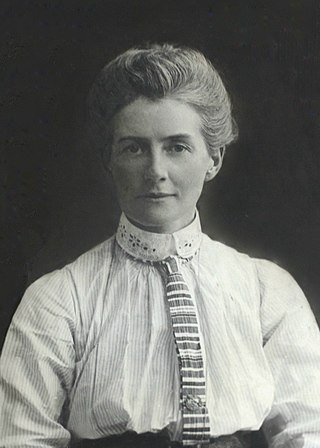
Edith Louisa Cavell was a British nurse. She is celebrated for treating wounded soldiers from both sides without discrimination during the First World War and for helping some 200 Allied soldiers escape from German-occupied Belgium. Cavell was arrested, court-martialled under German military law and sentenced to death by firing squad. Despite international pressure for mercy, the German Government refused to commute her sentence and she was shot. The execution received worldwide condemnation and extensive press coverage.

Julia Arthur was a Canadian-born stage and film actress.

Hearts of the World is a 1918 American silent World War I propaganda film written, produced and directed by D. W. Griffith. In an effort to change the American public's neutral stance regarding the war, the British government contacted Griffith due to his stature and reputation for dramatic filmmaking.

Pauline Starke was an American silent-film actress.

The Little American is a 1917 American silent romantic war drama film directed by Cecil B. DeMille. The film stars Mary Pickford as an American woman who is in love with both a German soldier and a French soldier during World War I. Art direction for the film was done by Wilfred Buckland. John Hay Beith was technical advisor on the film, credited under his pen name, Ian Hay.

Till I Come Back to You is a 1918 American silent drama film directed by Cecil B. DeMille.

Dawn is a 1928 British silent war film directed by Herbert Wilcox and starring Sybil Thorndike, Gordon Craig, and Marie Ault. It was produced by Wilcox for his British & Dominions Film Corporation. The film was made at Cricklewood Studios with sets designed by Clifford Pember.

The Prussian Cur is a 1918 American anti-German silent propaganda film produced during World War I. Now considered a lost film, it is notable for telling the story of the Crucified Soldier.
Everywoman's Husband is a 1918 American silent drama film directed by Gilbert P. Hamilton and starring Gloria Swanson. A print of the film is preserved at the UCLA Film and Television Archive.
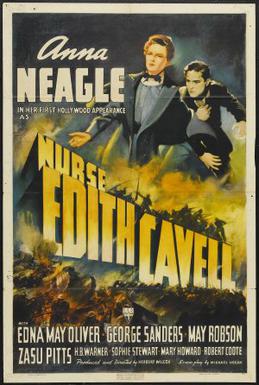
Nurse Edith Cavell is a 1939 American film directed by British director Herbert Wilcox about Edith Cavell. The film was nominated at the 1939 Oscars for Best Original Score.

The Martyrdom of Nurse Cavell is a 1916 Australian silent film about the execution of nurse Edith Cavell during World War I.
Nurse Cavell is a 1916 Australian feature-length film directed by W. J. Lincoln about the execution of Edith Cavell during World War I. It was also known as Edith Cavell.
La Revanche, also known as The Vengeance, is a 1916 Australian feature-length film directed by W. J. Lincoln about the revenge sought by Belgian friends of Edith Cavell against the Germans during World War I. It was a sequel to Nurse Cavell (1916), using many of the same cast and crew.
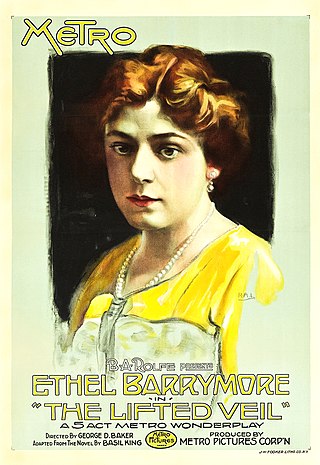
The Lifted Veil is a 1917 American silent drama film produced by B. A. Rolfe and distributed by Metro Pictures. It is based on a 1917 novel The Lifted Veil by Basil King, an author popular with women readers. Stage star Ethel Barrymore, under contract to Metro, appears in her eighth silent feature film, which is now lost.
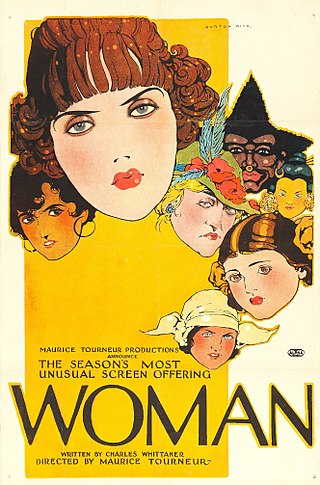
Woman, also known by its french title L'Éternelle Tentatrice is a 1918 American silent drama film directed by Maurice Tourneur, an allegorical film showcasing the story of women through points in time. Popular in its day, the film was distributed in the State's Rights plan as opposed to a major distributor, like Paramount Pictures or Universal Pictures.
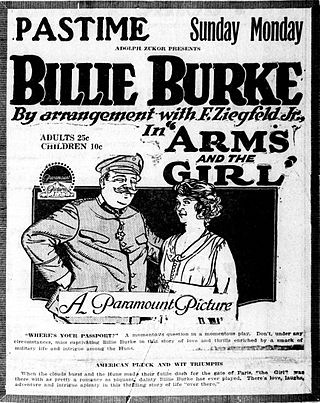
Arms and the Girl is a 1917 American silent drama film produced by Famous Players–Lasky and distributed by Paramount Pictures. It was directed by Joseph Kaufman and stars Billie Burke. The film is one of the few of director Kaufman's to survive and the earliest known Billie Burke silent to survive.
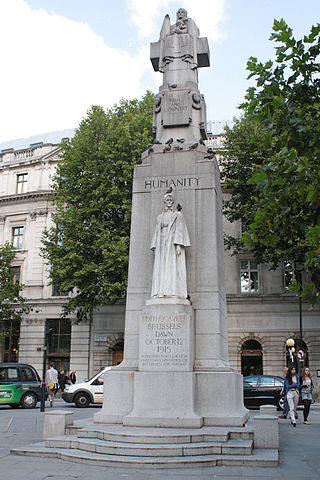
The Edith Cavell Memorial is an outdoor memorial to Edith Cavell by Sir George Frampton, in London, United Kingdom. The memorial is sited in St Martin's Place, beside the A400, just outside the northeast corner of Trafalgar Square, north of St Martin-in-the-Fields, east of the National Gallery and the National Portrait Gallery, and south of the London Coliseum. The site is adjacent to the first headquarters of the British Red Cross, originally located at 7 St Martin's Place.

The Pride of New York is a lost 1917 American silent war drama film directed by Raoul Walsh and starring his brother George Walsh. It was produced by and distributed through the Fox Film Corporation.

My Four Years in Germany is a 1918 American silent war drama film directed by William Nigh, based on the experiences of real life U. S. Ambassador to Germany James W. Gerard as described in his book. It is notable as being the first film produced by the four Warner Brothers, Harry, Sam, Albert and Jack, although the title card clearly reads "My Four Years In Germany Inc. Presents ...". The film was produced during the height of World War I and is generally considered a prime example of war propaganda.

The Great Victory or The Great Victory, Wilson or the Kaiser? The Fall of the Hohenzollerns is a 1919 American silent war drama film directed by Charles Miller and starring Creighton Hale, Florence Billings and Helen Ferguson. It was made as anti-German propaganda during World War I, although it was released after the end of the conflict.

















